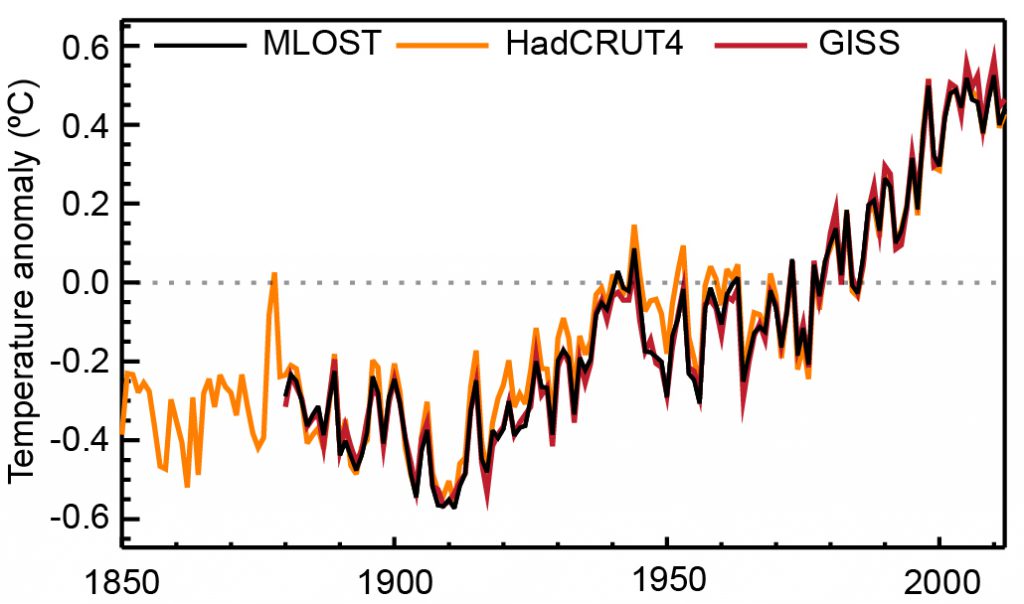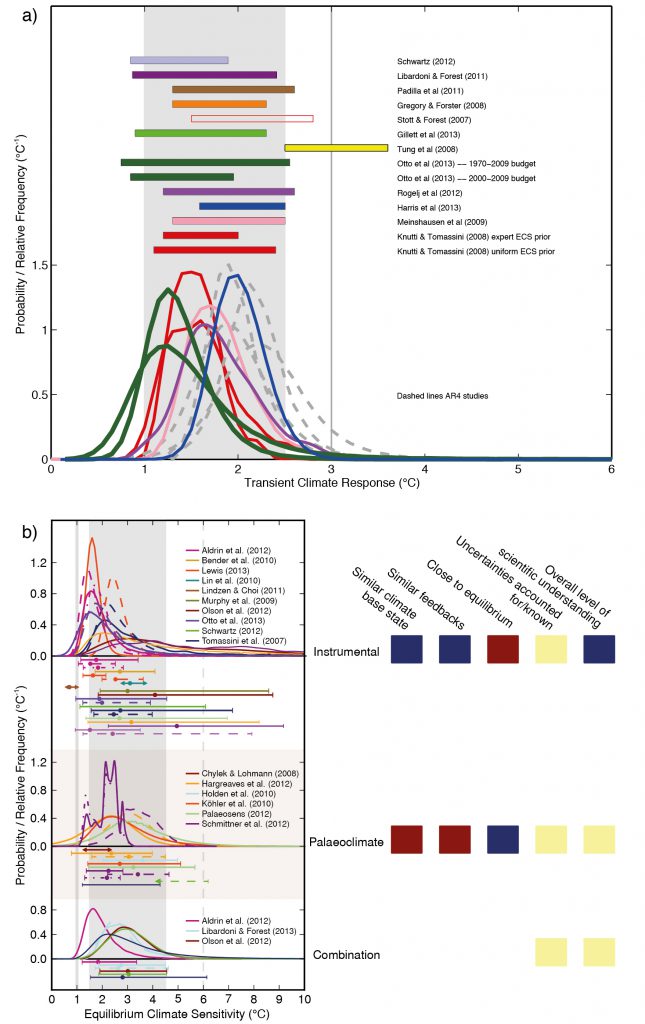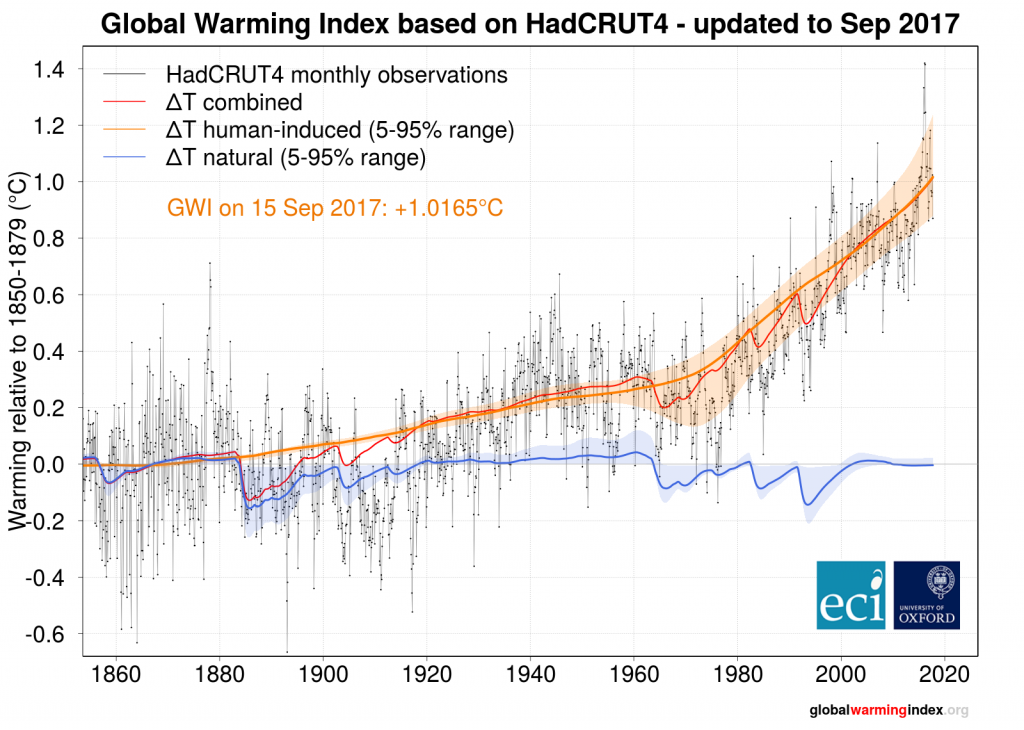Five scientists analyzed the article and estimate its overall scientific credibility to be 'low'. more about the credibility rating
A majority of reviewers tagged the article as: Cherry-picking, Misleading.

SCIENTISTS’ FEEDBACK
SUMMARY
This article in The Daily Caller describes a recent study published on the University of Alabama at Huntsville satellite temperature dataset. The study claims that, after removing the cooling influence of two large volcanic eruptions in 1982 and 1991, the rate of warming is slower than simulated by climate models.
While The Daily Caller story accurately describes the study, it fails to include comments from other scientists in the field or to provide necessary context for readers, as the scientists who reviewed the story explained. For example, the study fails to account for more recent volcanic activity, and does not support its conclusion that climate models are overly sensitive to CO2.
In addition, the story’s headline emphasizes that the study shows “no acceleration in global warming for 23 years” and this is presented as a challenge to model simulations. This is misleading, as no acceleration of the warming rate is expected to be seen in such a short timeframe.
See all the scientists’ annotations in context
This is part of a series of reviews of 2017’s most popular climate stories on social media.
REVIEWERS’ OVERALL FEEDBACK
These comments are the overall opinion of scientists on the article, they are substantiated by their knowledge in the field and by the content of the analysis in the annotations on the article.
Alexis Berg, Research Associate, Harvard University:
This article reports on a new study by Christy and McNider that, in my view, contains little new regarding atmospheric temperature trends and seems to simply assert that model-observation discrepancies are due to model errors. Also, it seems the absence of accelerating warming trends is meant to go against prevailing climate science, but I find that to be a strawman argument.
In that sense the article is misleading—however, to its credit, it does report on other published results that contradict this recent study, but it fails to provide further context or to make any effort to compare/reconcile the validity of these different studies.
Stephen Po-Chedley, Research Scientist, Lawrence Livermore National Laboratory:
The article includes many points made in the original study, but leaves out or de-emphasizes issues that are important to the interpretation of the results. Other factors contribute to model-observational differences in atmospheric warming, but the presentation makes it seem like the difference is largely a result of climate model sensitivity errors.
Francois-Marie Breon, Senior Scientist, Commissariat à l'Energie Atomique:
The general public article provides a fairly accurate summary of the John Christy paper. It may lack some information about the general context, and could have emphasized some of the uncertainties in the satellite data and the fact that the temperature analysis refers to rather high atmospheric levels rather than the low levels where humans live.
I also note that, a few years back, the skeptics said that the warming had “stopped” whereas they now say that there is “no acceleration”. This is a nice progress towards the truth.
Victor Venema, Scientist, University of Bonn, Germany:
The article contains some inaccuracies, but the main problem is that it depends on only one source, which the article admits is “contentious”. The authors have a long tradition of overconfidence in their data, their dataset has often needed large adjustments and has a large structural uncertainty and the study was published in a low-level journal. Even without these red flags, it is a good tradition in science reporting to ask experts in the field for their assessment of the study and to provide context, which is completely missing. Bad journalism.
Carl Mears, Senior Research Scientist, Remote Sensing Systems (RSS):
The article does an adequate job of describing the Christy and McNider paper, but leaves out discussion of several assumptions, caveats, and alternative explanations in the original paper. In particular, both the article and the original paper ignore the contribution of small but important volcanic eruptions in the 21st century that have been shown to exhibit a cooling influence on tropospheric temperatures after 2000.
Notes:
[1] See the rating guidelines used for article evaluations.
[2] Each evaluation is independent. Scientists’ comments are all published at the same time.
FEATURED ANNOTATIONS
The statements quoted below are from the article; comments and replies are from the reviewers.
“STUDY: Satellites Show No Acceleration In Global Warming For 23 Years”
Carl Mears, Senior Research Scientist, Remote Sensing Systems (RSS):
The article leaves out several assumptions, caveats, and alternative explanations, some of which are described in the original paper.
1. Both the article and the original paper ignore the effects of smaller but important eruptions in the 21st century that cause
a cooling effects that is not included in the model forcings. These have been shown to have a significant effect on the post-2000 trends1,2.
The original paper brushes these later eruptions aside without discussing why their results might differ from the earlier Santer et al. results. By then fitting to a model that includes
only the earlier eruptions, a decrease in overall warming is guaranteed in their analysis.
2. In the original paper, the authors rightly discuss the possibility that more heat has been sequestered into the ocean in “real life” than is simulated by the models. This is likely the case because of the increase in oceanic windspeed (and thus ocean mixing) in the tropics over the last few decades that is not generally present in the model results. In the article, only the sensitivity to carbon dioxide is discussed, supported by a quote from Dr. Christy. Blaming any model/measurement discrepancy on one possible cause, CO2 sensitivity, that has a large effect on the multidecadal time scale, while ignoring other possible causes, such as smaller volcanoes or internal variability) that may average out on the long term is “cherry picking”. This is done in the article, and to a smaller degree in the original paper.
3. The original paper make an admittedly bold assumption (as noted in the paper) that internal variability can be ignored while calculating transient sensitivity to increasing carbon dioxide.
The leads to less uncertainty in the derived transient sensitivity results than can likely be justified. No discussion of this assumption appears in the article.
4. Both the article and the original paper fail to place the new results in context of other diagnostics of global warming. These include surface temperature (which is likely more precisely measured and certainly has a longer measurement record) and ocean heat content (which is likely where at least a portion of the missing heat has gone).
- 1- Santer et al (2014) Volcanic contribution to decadal changes in tropospheric temperature, Nature Geoscience
- 2- Santer et al (2015) Observed multivariable signals of late 20th and early 21st century volcanic activity, Geophysical Research Letters
Victor Venema, Scientist, University of Bonn, Germany:
The study was actually about satellite estimates of the upper air temperature for the much longer period January 1979 – June 2017.
It is possible to see an acceleration of the warming over the last century. In the graph below showing three well-known temperature change estimates based on the surface air temperature observations the warming is clearly smaller around 1900 than it is around 2000. In other words the warming has accelerated.

Source: IPCC
For a period of a few decades one does not expect to be able to see an acceleration, especially in the even more noisy upper air temperature estimates.
“Global warming has not accelerated temperature rise in the bulk atmosphere in more than two decades”
Stephen Po-Chedley, Research Scientist, Lawrence Livermore National Laboratory:
This is not a particularly new result. It has long been known that warming has not accelerated in the observations in the last decade. Although this is well-documented in the surface record, it has also been noted in the satellite record as well.
- Foster and Rahmstorf (2011) Global temperature evolution 1979 – 2010, Environmental Research Letters
- Gleisner et al (2016) Recent global warming hiatus dominated by low-latitude temperature trends in surface and troposphere data, Geophysical Research Letters
- Medhaug et al (2017) Reconciling controversies about the ‘global warming hiatus’, Nature
- Santer et al (2017) Causes of differences in model and satellite tropospheric warming rates, Nature Geoscience
Alexis Berg, Research Associate, Harvard University:
This is not a new finding. As the article itself mentions, this has been shown in previous studies.
Also, this (and the title) makes it sound as though the expectation was too find accelerating trends in atmospheric temperatures (and thus that the “alarmists” are wrong), but I don’t believe this is the case over a relatively short time-span such as the one in this study (30-40 yrs).
“We indicated 23 years ago — in our 1994 Nature article — that climate models had the atmosphere’s sensitivity to CO2 much too high,” Christy said in a statement. “This recent paper bolsters that conclusion.”
Victor Venema, Scientist, University of Bonn, Germany:
This 23 years is likely where the mistake in the title comes from.
Although the data in this Christy and McNider article from 1994 turned out to have major errors, for example not taking into account that the satellites drift, which caused the underestimation of the warming, it started the tradition of Christy and McNider being overconfident about the reliability of their data (“perhaps the best measurements of the Earth’s air temperature in terms of its global coverage and precision.”). And the tradition of immediately blaming climate models, ignoring many other independent lines of evidence on warming and climate sensitivity, when there can be many other reasons for the difference between their data and climate models.
In this 1994 paper, Christy and McNider’s data showed almost no warming. In that respect one could say that 23 years of removing errors from the satellite temperature data has accelerated upper air warming.
Stephen Po-Chedley, Research Scientist, Lawrence Livermore National Laboratory:
One curious aspect of this statement is that the trend in over the first 15 years (1979 – 1993) is seemingly taken from a much older version of the UAH satellite lower tropospheric temperature dataset. This dataset has since been improved as inhomogeneities have been discovered and corrected, including satellite orbital decay, an error in the diurnal correction, and a miscalibration of the NOAA-9 satellite. Each of these issues would have spuriously reduced the trend in the UAH dataset—presumably if this specific result were revisited models and satellites would agree much better over 1979 – 1993.
- Wentz and Schabel (1998) Effects of orbital decay on satellite-derived lower tropospheric temperature trends, Nature
- Mears and Wentz (2005) The Effect of Diurnal Correction on Satellite-Derived Lower Tropospheric Temperature, Science
- Po-Chedley and Fu (2012) A Bias in the Midtropospheric Channel Warm Target Factor on the NOAA-9 Microwave Sounding Unit, Journal of Atmospheric and Oceanic Technology
- Spencer et al (2017) UAH Version 6 Global Satellite Temperature Products: Methodology and Results, Asia-Pacific Journal of Atmospheric Sciences
“showed virtually no change in the rate of warming since the early 1990s.”
Stephen Po-Chedley, Research Scientist, Lawrence Livermore National Laboratory:
The periods compared by the authors are somewhat arbitrary (1979 – 1993 and 1979 – 2017) since they are comparing their new result with their older study (in 1994). This makes it a little difficult to compare with other studies on this topic, though, again, this result is not necessarily surprising.
“Models are too sensitive to increases in carbon dioxide concentrations in the atmosphere, he said.”
Victor Venema, Scientist, University of Bonn, Germany:
He said without providing evidence for this claim. There are many independent lines of evidence on the sensitivity of the global temperature to changes in carbon dioxide concentrations. From basic physics, a large number of different period with climatic changes in the deep past and the cooling observed for volcano eruptions.

Source: IPCC
Stephen Po-Chedley, Research Scientist, Lawrence Livermore National Laboratory:
While others have documented differences in the rate of warming between models and observations, this study is different in that the authors suggest that these differences are because models are too sensitive to increases in atmospheric carbon dioxide. Several studies disagree with this assessment in both the surface and atmospheric record.
Other factors contribute to this apparent discrepancy (and some are noted in the original study). These include the potential for observational biases, errors in external forcing prescribed to the models, and real world multidecadal climate variability. So the attribution of model-observational differences predominantly to models is not supported.
- Richardson et al (2016) Reconciled climate response estimates from climate models and the energy budget of Earth, Nature Climate Change
- Santer et al (2017): Causes of differences in model and satellite tropospheric warming rates, Nature Geoscience
Alexis Berg, Research Associate, Harvard University:
This claim is not substantiated by the study. There are several hypotheses to explain why model trends and observations do not agree—internal variability, errors in forcings, model error. Mr. Christy favors the last one, but, as far as I can tell, his study makes no effort to analyse the plausibility of different causes (in fact, it seems they explicitly assume that internal variability and forcing error are not a cause). The other study cited in this piece, Ben Santer’s paper, goes much further and actually tries to evaluate the plausibility of each hypothesis -and, as the article mentions, comes to different conclusions.
Note also that surface warming in models is in agreement with observations. The question is then why atmospheric warming seems to not be—the models appear to run a little warm there over the last two decades.
“climate models predict too much warming in the troposphere”
Stephen Po-Chedley, Research Scientist, Lawrence Livermore National Laboratory:
One issue with such comparisons is that the observational record of atmospheric warming is quite uncertain as evidenced by the large trend differences between different groups that create satellite temperature datasets and even between versions of each group’s datasets.
- Mears et al (2011) Assessing the uncertainty in estimates of atmospheric temperature changes from MSU and AMSU using a Monte-Carlo estimation technique, Journal of Geophysical Research
“While many scientists have acknowledged the mismatch between model predictions and actual temperature observations, few have really challenged the validity of the models themselves.”
Alexis Berg, Research Associate, Harvard University:
A better way to put it would be that, given the data, few have come to the conclusion at this point that models are fundamentally flawed.
“A recent study led by Lawrence Livermore National Laboratory climate scientist Ben Santer found that while the models ran hot, the ‘overestimation’ was ‘partly due to systematic deficiencies in some of the post-2000 external forcings used in the model simulations.’”
Stephen Po-Chedley, Research Scientist, Lawrence Livermore National Laboratory:
This is right—models have the wrong “external forcings” (such as volcanic forcing), which is likely an important factor in model-observational differences.
It is also possible that errors in removing volcanic forcing and natural variability could also affect model-observational comparisons.
- Solomon et al (2011) The Persistently Variable “Background” Stratospheric Aerosol Layer and Global Climate Change, Science
- Santer et al (2014) Volcanic contribution to decadal changes in tropospheric temperature, Nature Geoscience
“While volcanic eruptions are natural events, it was the timing of these that had such a noticeable effect on the trend”
Victor Venema, Scientist, University of Bonn, Germany:
That is one of the disadvantages of using such a short dataset. For the more reliable station observations of surface air temperature observations go back in the 19th century making the contribution of (individual) volcanoes a lot smaller.

Source: Global Warming Index
“removing the climate effects of volcanic eruptions early on in the satellite temperature record”
Stephen Po-Chedley, Research Scientist, Lawrence Livermore National Laboratory:
Note that although there is nothing wrong with attempting to remove these effects from the temperature time series, it can be quite uncertain and subject to methodology, especially over short timescales.
As noted in the research paper, multidecadal variability may also effect the results. Several studies have noted that multidecadal variations in the rate of ocean heat uptake have affected observed warming rates.
- Santer et al (2001) Accounting for the effects of volcanoes and ENSO in comparisons of modeled and observed temperature trends, Journal of Geophysical Research
- Chen and Tung (2014) Varying planetary heat sink led to global-warming slowdown and acceleration, Science
“‘Those eruptions happened relatively early in our study period, which pushed down temperatures in the first part of the dataset, which caused the overall record to show an exaggerated warming trend,’ Christy said. ‘While volcanic eruptions are natural events, it was the timing of these that had such a noticeable effect on the trend. If the same eruptions had happened near the more recent end of the dataset, they could have pushed the overall trend into negative numbers, or a long-term cooling,’ Christy said.”
Stephen Po-Chedley, Research Scientist, Lawrence Livermore National Laboratory:
This study does not include the effect of smaller volcanoes late in the record that would have reduced real-world warming. Since these volcanoes were not included in model simulations, the model simulations would also have too much warming, since they did not include accurate representation of the effect of volcanic activity. This would have increased the model-observational discrepancy.
- Santer et al (2014) Observed multivariable signals of late 20th and early 21st century volcanic activity, Geophysical Research Letters
“climate models need to be retooled to better reflect conditions in the actual climate”
Stephen Po-Chedley, Research Scientist, Lawrence Livermore National Laboratory:
It’s important to note that climate scientists do work on both understanding model-observational discrepancies and improving models. Another aspect to consider is that observations also have biases that can affect such comparisons.
“policies based on previous climate model output and predictions might need to be reconsidered”
Stephen Po-Chedley, Research Scientist, Lawrence Livermore National Laboratory:
This study alone does not support this kind of broad statement, especially given that there are already several studies that disagree with the authors results.

